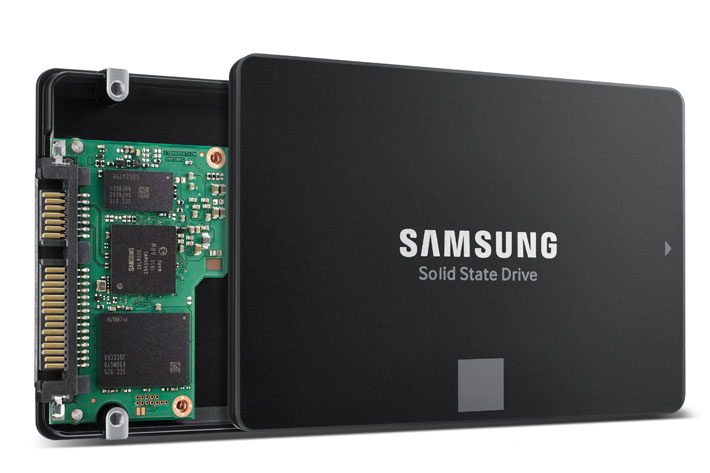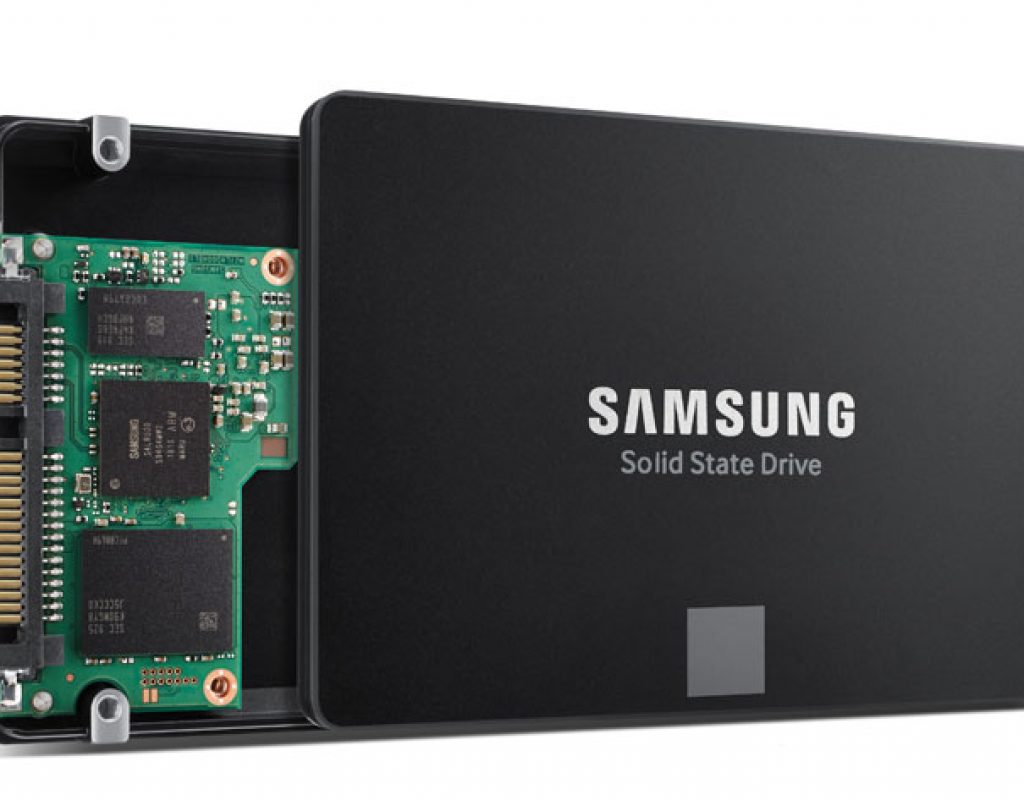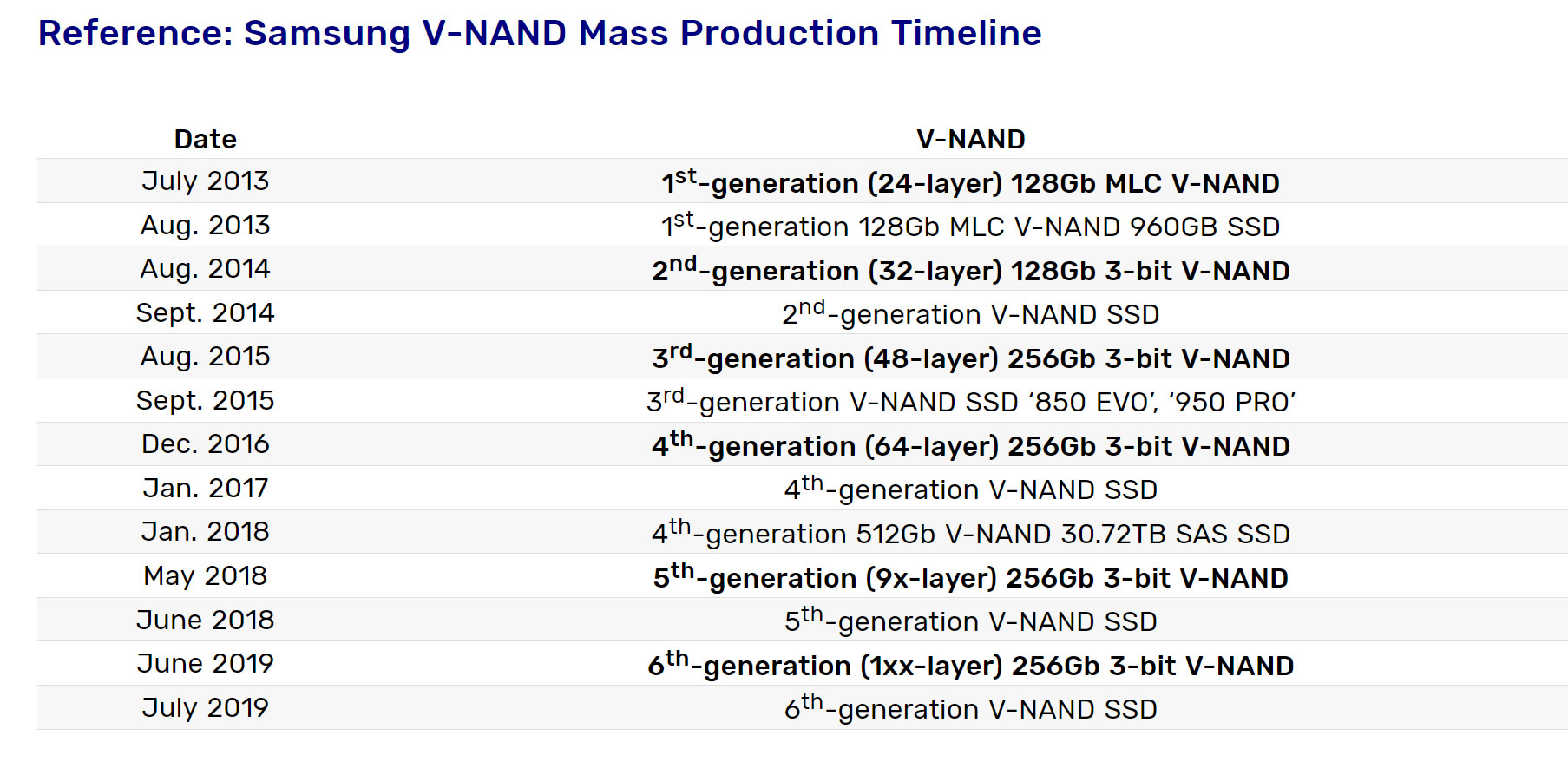
The new Samsung SSD opens a new era, as V-NAND breaks through current cell stacking limitation in 3D NAND with the industry’s first 100+ layer single-tier design for superior speed and power efficiency.
With the market aspiring for SSDs with more capacity the new Samsung 250GB SATA SSD is not exciting news. This SSD, though, is not like the others, because it integrates the company’s sixth-generation (1xx-layer) 256-gigabit (Gb) three-bit V-NAND for global PC OEMs. By launching a new generation of V-NAND in just 13 months, Samsung has reduced the mass production cycle by four months while securing the industry’s highest performance, power efficiency and manufacturing productivity.
Since July 2013, when the 1st-generation (24-layer) 128Gb MLC V-NAND appeared, allowing for the introduction of the first generation of 128Gb MLC V-NAND 960GB SSD, the industry has moved fast, and we’re now at the 6th-generation (1xx-layer) 256Gb 3-bit V-NAND, allowing the production of the 250GB SATA SSD, which is to be followed by more new products, as Samsung plans to offer high-speed, high-capacity SSDs and eUFS solutions based on its sixth-generation V-NAND.
This new V-NAND breaks through current cell stacking limitation in 3D NAND with the industry’s first 100+ layer single-tier design for superior speed and power efficiency. That’s where we are heading to, according to Samsung. In fact, we’re going beyond that, as Samsung reveals.
512Gb V-NAND- based solutions next
“By bringing cutting-edge 3D memory technology to volume production, we are able to introduce timely memory lineups that significantly raise the bar for speed and power efficiency,” said Kye Hyun Kyung, executive vice president of Solution Product & Development at Samsung Electronics. “With faster development cycles for next-generation V-NAND products, we plan to rapidly expand the markets for our high-speed, high-capacity 512Gb V-NAND-based solutions.”
Samsung’s sixth-generation V-NAND is the only single-stack 3D memory die with a 100+ layer design and it features the industry’s fastest data transfer rate, capitalizing on the company’s distinct manufacturing edge that is taking 3D memory to new heights.
Utilizing Samsung’s unique ‘channel hole etching’ technology, the new V-NAND adds around 40-percent more cells to the previous 9x-layer single-stack structure. This is achieved, says Samsung, “by building an electrically conductive mold stack comprised of 136 layers, then vertically piercing cylindrical holes from top to bottom, creating uniform 3D charge trap flash (CTF) cells.”
As the mold stack in each cell area increases in height, NAND flash chips tend to become more vulnerable to errors and read latencies. To overcome such limitations, Samsung has incorporated a speed-optimized circuit design that allows it to achieve the fastest data transfer speed, at below 450 microseconds (μs) for write operations and below 45μs for reads. Compared to the previous generation, this represents a more than 10-percent improvement in performance, while power consumption is reduced by more than 15 percent.
Next-gen V-NAND will have more than 300 layers
Thanks to this speed-optimized design, Samsung will be able to offer next-generation V-NAND solutions with over 300 layers simply by mounting three of the current stacks, without compromising chip performance or reliability.
In addition, the number of channel holes required to create a 256Gb chip density has decreased to 670 million holes from over 930 million with the previous generation, enabling reduced chip sizes and less process steps. This brings a more than 20-percent improvement in manufacturing productivity.
Leveraging the high-speed and low-power features, Samsung plans to not only broaden the reach of its 3D V-NAND into areas like next-generation mobile devices and enterprise servers, but also into the automotive market where high reliability is extremely critical.
Following the introduction of the 250GB SSD, Samsung plans to offer 512Gb three-bit V-NAND SSD and eUFS in the second half of this year. The company also expects to expand production of higher-speed and greater-capacity sixth-generation V-NAND solutions at its Pyeongtaek (Korea) campus starting next year to better meet demand from global customers.

















